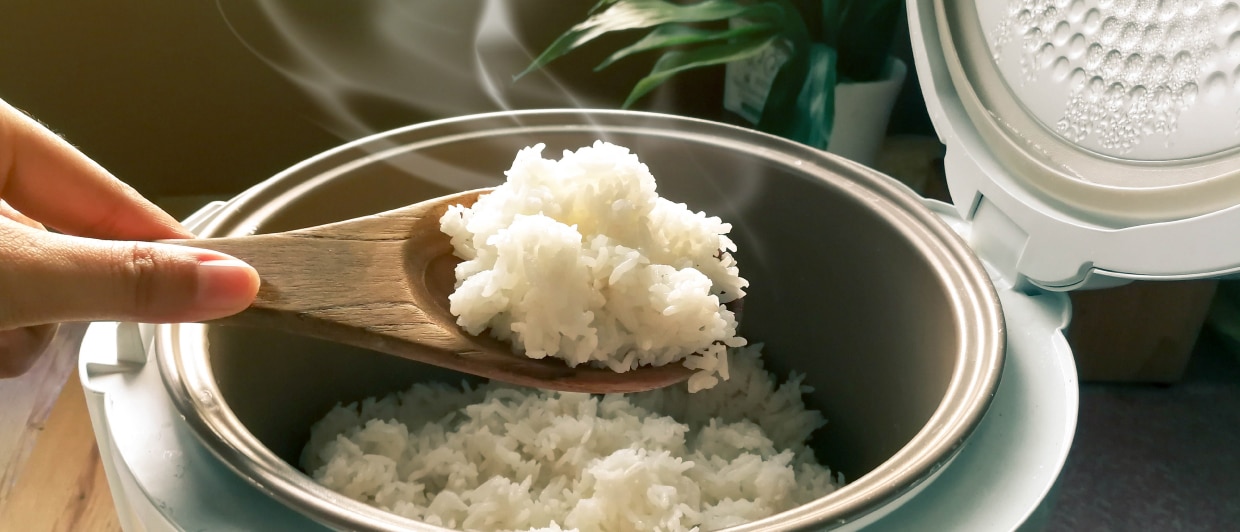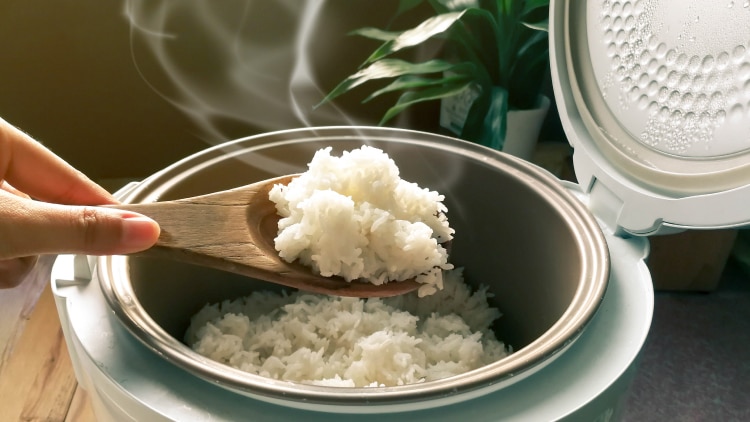

2025 Popular Rice Cooker Shopping Guide & Recommendation
Rice Cooker Shopping Tips
There are many rice cookers on the market. Some are inexpensive while others cost a lot more. So how are they different? What is an IH rice cooker? And how do you pick the rice cooker that’s right for you?
Capacity
The capacity of a rice cooker determines the amount of rice the user can cook at one time. A rice cooker generally uses litre (L) as a unit of measurement.

Cooking methods
Rice cookers are generally divided into the standard mechanical type and the microcomputer type.
- Standard mechanical type: Uses a built-in heating plate to heat. The magnetic steel loses magnetism upon heating which is restored after cooling to control the temperature of the cooker. At the same time, a mechanical temperature sensor device is used. When water in the rice cooker has evaporated and the temperature exceeds 100°C, the device switches off and stops heating.
- Microcomputer type: A microcomputer sensor controls the subtle temperature changes during boiling. Fuzzy Logic is a common type of microcomputer technology. If the user fails to add the appropriate amount of water, Fuzzy Logic auto adjusts the power to ensure rice is cooked at just the right texture every time.
Heating methods
You’ve probably noticed IH rice cookers in ads but what exactly are they? IH magnetic technology is one of the heating methods, while other methods include chassis heating and 3D heating which each offer benefits and disadvantages.
- IH Heating
- IH magnetic sensor heating: The inner pot is directly heated by generating magnetic power to give a uniform heat. Rice is cooked in such a way that each single grain is clearly defined for a better bite but the price of this type of rice cooker is higher.
- IH pressure heating: The heating temperature for cooking the rice is controlled at between 104°C and 106°C through an increase in pressure. This is conducive to making the rice sweet and chewy.
- 3D Heating: Heat is transmitted from the base of the rice cooker and expands to the upper left and right sides to ensure the inner pot is heated evenly.
- Standard Chassis Heating: Heat is transmitted to the bottom of the inner pot to cook the rice. These cookers are the most affordable, but the heat distribution is uneven.
Inner pot materials
Inner pots come in various materials and offer different degrees of performance and cooking results.
- Aluminum: the most widely used material which offers even temperature distribution
- Stainless steel: corrosion-resistant, but more difficult to clean
- Crystal: a non-stick pot, that you simply wipe gently with a cloth after use
- Claypot: contains many beneficial substances for the human body; heating power is average and it generally consumes more power
- Glass: anti-abrasion and withstands high temperatures; contains no heavy metals, colourless and does not absorb odour
Features
Standard rice cookers usually offer a timer, pre-cook, quick cook, soup and congee modes to meet different needs. Some rice cookers can even be used to make cheesecake, yoghurt and hot spring eggs. Recently, the hot item is a sugar-reducing rice cooker that can effectively reduce sugar intake and is suitable for those who need to control their blood sugar and weight.
Power consumption
Many people think that high wattage rice cookers consume more electricity. But in fact, low wattage rice cookers are less power efficient. For example, to cook 1 kg of rice, a 500-watt rice cooker takes 30 minutes and consumes 0.27 kilowatts; a 700-watt multi-function rice cooker takes only 20 minutes and consumes only 0.23 kilowatts.
Hot brands: TOSHIBA,PANASONIC,Mijia,TEFAL
Recommended products: Mijia ZHF4008HK IH Rice Cooker,PANASONIC SR-AC071 IH Rice Cooker,TOSHIBA RC-10IRPH 1.0L Low Sugar Healthy IH Rice Cooker
